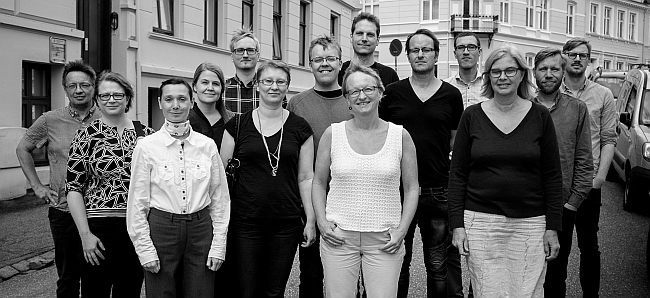Text: Kaisa Järvelä, photo: Bjarne Øymyr/NSD
Nordic Data Archives Created a Data Portal for Health Data
The two-year Nordic Health Data project now allows researchers to easily search any Nordic data archive for research data related to health sciences.
All health data archived at Nordic data archives will be available through a single data portal in the future. The data archives of Finland, Sweden, Norway and Denmark collaborated to build the portal during the two-year Nordic Health Data project that concluded in October 2016. The portal prototype has already been published and is, at least for now, online and available for researchers to use.
The purpose of the project, funded by NordForsk, was to increase efficient use of Nordic health data over national borders. European social science data, for instance, have been available through the data catalogue of the Consortium of European Social Science Data Archives (CESSDA), whereas health data have not had a similar shared international catalogue before.
Continuation funding still required
In principle, the portal created in the project should allow users to find all the health data archived at Nordic data archives.
Yet this is not currently the case, admits Health Research Specialist Annaleena Okuloff from the Finnish Social Science Data Archive. For example, searching with the term 'health' currently only gives 313 datasets as a result even though the FSD alone stores around 200 health-related datasets.
The main functionalities of the portal were completed during the project, but there is no funding yet for its maintenance or further development. In other words, fixing any flaws in the portal or updating new datasets into it is at the moment not possible.
The plan is to apply for continuation funding, though. It would be used to make the portal and the terminology used for describing datasets more functional. Another aspiration would be to increase the number of datasets in the portal.
According to Okuloff, the ideal situation would be to get all Nordic datasets with appropriate metadata into the portal.
'In that scenario, the portal would serve researchers in the best possible way', Okuloff says.
For now, register data cannot be included in the portal because appropriate metadata for them are not available. The situation is likely to change in the future, as it will probably be obligatory in Finland to provide descriptions of register data once the new legislation on social and health services has entered into force.
Searching and filtering is easy
The majority of the datasets in the portal are currently suitable for use by researchers in both social and health sciences – although some data are available in the field of clinical medicine as well.
'Datasets related to health policy are clearly overrepresented because they are easy to archive', Okuloff explains.
The plan is that in the future, particularly the amount of data collected directly from research participants would increase in the portal.
The portal's search language is English, regardless of the country from which the datasets are searched. Search terms may be formulated relatively freely, which means that knowledge of standard keywords is not necessary to be able to use the service.
'Users can simply begin to type a word that describes the topic on a general level in the search field. After that, the portal gives suggestions through predictive search algorithm', Okuloff describes.
The search can be restricted using several different criteria if needed. For instance, the user can choose to browse data collected in Finland and Sweden only or survey data only.
Researchers were heard throughout the process
The project group has already had the chance to present the portal to researchers at some relevant conferences, such as the Nordic Meeting in Epidemiology and Registry-based Health Research (NordicEpi) in Oslo, the Annual European DDI User Conference (EDDI) for users of the Data Documentation Initiative (DDI) and the Annual Conference of the International Association for Social Science Information Services & Technology (IASSIST).
'The reception has been very enthusiastic. Researchers have clearly had a need for this kind of portal', Okuloff states.
The project group has strived to take users into account as much as possible from the earliest stages of building the service. For example, researchers have been asked to comment on the service on multiple occasions in different stages of development. This was done in an attempt to ensure that researchers can filter searches according to their needs and get results by searching with terms they use in real life.
Despite the needs for further development, Okuloff is already more than satisfied with the project achievements.
'We managed to build a functional portal in two years, which is an absolutely wonderful achievement.'
'The needs for further development are merely fine-tuning – most of the problems can be fixed reasonably quickly as long as funding is secured', she asserts.

Bjarne Øymyr from the NSD managed to get the members of the Nordic Health Data to pose for a group photo.
Nordic Health Data project
- Collaboration project conducted by the data archives of Finland, Sweden, Norway and Denmark during the years of 2014–2016 and funded by NordForsk.
- The objective was to develop shared practices for archiving health data and to make more efficient use of the already archived health data over national borders.
- The most important product of the project is the Nordic Health Data Portal, completed in autumn 2016 and targeted at researchers in health sciences.
- The data portal is in English and currently features over 300 health-related Nordic datasets. The objective is to significantly increase the number of datasets in the future.
- The portal still needs further development, but researchers can already use it at Nordic Health Data Portal Prototype
